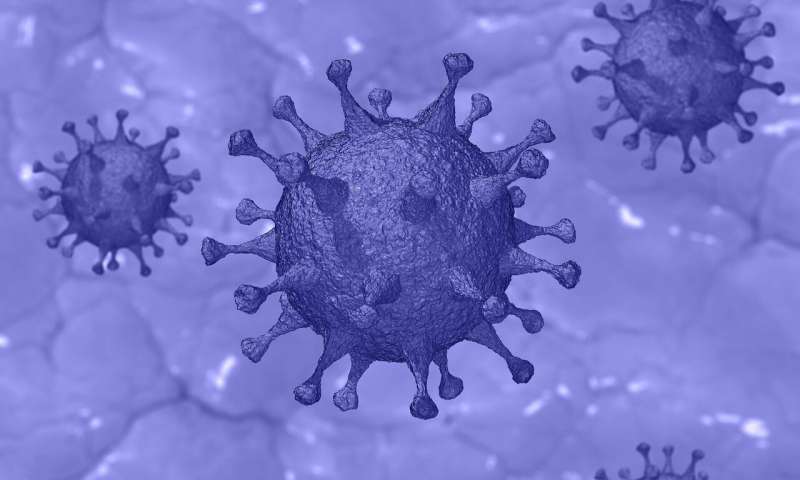HOME
New research investigates the role of lipid rafts in virus infiltration

A cell's membrane acts as a natural shield, a fence around the cell that protects and contains it. It mediates processes that let nutrients through and let waste out, and it acts as a physical barrier to the entry of toxic substances and pathogens, like the viruses SARS-CoV-1 and SARS-CoV-2, the one that causes COVID-19.
Such pathogens, however, employ clever strategies to trick and penetrate the cell, thereby replicating themselves and infecting the human body. The virus deceives the membrane by exposing specific anti-receptors to which suitable cell's receptors normally bind. The virus tricks the receptors into believing that what's landing is something else, namely an affine ligand, something that is safe. Such a process activates and grows thickened zones along the cell membrane, or "lipid rafts," which are more likely to permit the virus to alter the cell's membrane, yielding its entry into the cell.
New interdisciplinary research published in the Journal of the Mechanics and Physics of Solids sheds light on how and why the cell membrane forms and grows lipid rafts triggered by ligand-receptor activity. The work could lead to new strategies and innovative approaches to prevent or fight the action of the virus through the integration of biomedical and engineering knowledge.
"Although lipid rafts' influence on a cell's response to external agents has been deeply investigated, the physical components of what takes place during ligand-binding has not yet been fully understood," said Luca Deseri, research professor at the University of Pittsburgh's Swanson School of Engineering in the Mechanical Engineering and Materials Science Department, full professor and head of the graduate school in Engineering at DICAM-University of Trento in Italy, and corresponding author on the paper. "Our team used an interdisciplinary approach to better understand why active receptors tend to cluster on lipid rafts. More importantly, we confirm and predict the formation of the complex ligand receptors."
News Source